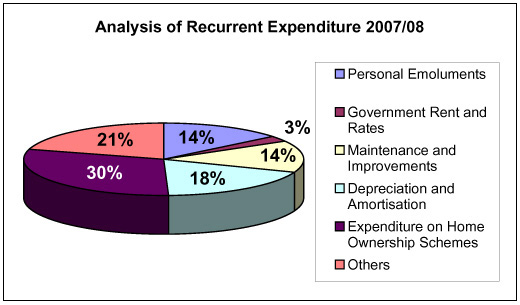| Financial Performance | Housing Rent Policy | |||
| Resource Optimisation | Operation with Cost-Effectiveness |

About 28% of Hong Kong's population lives in Public Rental Housing (PRH) estates provided by the Housing Authority (HA), therefore to serve the public's best interests we must continue to improve our housing units and services to ensure the best use of public funds. We strive for functional and cost-effective solutions through the best use of materials and the latest building techniques to enhance quality, safety and the well-being of our residents.
| Economic Performance Targets for period 2007/08 | Progress |
| Implementing the new rent adjustment mechanism and following up the outcome of the Review of Domestic Rent Policy. | Fully Met |
| Continue to minimise the vacancy of Public Rental Housing estates. | Fully Met |
| Conduct tenancy control and education campaigns with an aim to reduce abuse of housing resources. | Fully Met |
| Continue on assessment of older estates and enhance their preventive maintenance, restoration and improvement. | Fully Met |
The Housing Authority (HA) is financially autonomous. Our enormous public housing programmes are sustained through internally generated funds. A financial review for 2007/08 is provided in our Annual Report.
Our financial performance at-a-glance| Consolidated Surplus in 2007/08 | |
| HK$ M | |
| Consolidated Operating Account Surplus | 2 418 |
| Funds Management Account Surplus | 939 |
| Agency Account Deficit | (53) |
| Surplus for the year before appropriation | 3 304 |
| Appropriation:- | |
| Interest on Government Loan Capital | (70) |
| Dividend Payable to Government | (217) |
| Surplus for the Year after Appropriation | 3 017 |
| Breakdown of Consolidated Operating Surplus/(Deficit) in 2007/08 | |
| HK$ M | |
| Rental Housing Operations | (922) |
| Commercial Operations | 530 |
| Home Ownership Assistance Operations | 2 626 |
| Surplus for the year before non-operating expenditure and exceptional items | 2 234 |
| Net non-operating expenditure | (414) |
| Exceptional items | 598 |
| Consolidated Operating Account Surplus for the year | 2 418 |
| Capital Expenditure for Years Ended 2004 - 2008 | ||||||
Items |
HK$ M | |||||
| 2003/04 | 2004/05 | 2005/06 | 2006/07 | 2007/08 | ||
| Construction | 11 062 | 7 228 | 3 467 | 3 634 | 4 950 | |
| Improvement Works | 332 | 174 | 214 | 107 | 162 | |
| Computer Systems | 94 | 105 | 84 | 111 | 117 | |
| Total Capital Expenditure | 11 488 | 7 507 | 3 765 | 3 852 | 5 229 | |
As at 31 March 2008, the HA's funds available for investment stood at HK$55 547 million, an increase by HK$3 092 million as compared to 31 March 2007.
Income-based Rent Adjustment Mechanism
The Housing (Amendment) Ordinance 2007 which came into operation on 1st January 2008 provides a more flexible rent adjustment mechanism for PRH that allows both upward and downward adjustment of rent according to changes in tenants' household income. The first rent review will be conducted in 2010, with subsequent reviews to be conducted every two years thereafter. To provide an appropriate starting point for the new rent adjustment mechanism to operate effectively, the HA reduced PRH rent by 11.6% in August 2007.
Assisting Families with Financial Hardship
We introduced the Rent Assistance Scheme (RAS) in 1992 to offer either a 25% or 50% rent reduction temporarily to tenants with different levels of financial hardship. Effective 1 August 2007, we have relaxed the eligibility criteria by lowering the rent-to-income ratios and increasing of the income thresholds to make the scheme more readily available to tenants suffering genuine financial hardship. ![]()
Public Rental Housing
It is our primary role to provide Public Rental Housing (PRH) flats to those who cannot afford housing in the private rental market. During the year, the Housing Authority (HA) received an average of 2 100 new Waiting List registrations every month. The average waiting time for general applicants and elderly one-person applicants stood at 1.9 and 1.1 years respectively.
In 2007/08, we allocated a total of 13 000 flats to Waiting List applicants.
| Average Waiting Time for PRH | ||
| General Applicants | Elderly One-person Applicants | |
| Our Pledge | 3 years | 2 years |
| Actual Waiting Time | 1.9 years | 1.1 years |
Combating Tenancy Abuse
The Public Housing Resources Management (PHRM) sub-section guards against abuse of our precious housing resources. In 2007/08, the PHRM investigated some 7 400 suspected cases of tenancy abuse and checked on some 4 800 cases to determine eligibility for subsidised housing among the families involved. The PHRM's efforts in recovering abused PRH flats, together with flats that are voluntarily surrendered and some 15 000 new flats we build every year, result in a total of about 27 400 flats that could be allocated to the needy annually. Our efforts in combating tenancy abuse have been widely communicated to Estate Management Advisory Committee members and tenants through video broadcasting to enhance their understanding of the housing policies.
Combating Rent Arrears
We have launched various initiatives to prevent and combat rent arrears of our PRH and commercial tenants. For PRH tenants, we have set up an enquiry hotline to allow tenants to check their rent payment history for the past six months. We have also launched a phased "Auto-dialing Rent Reminder" service via SMS or recorded message that reminds tenants to settle outstanding rent. Moreover we were able to directly transfer rent allowance for Comprehensive Social Security Assistance households from the Social Welfare Department starting 1 June 2007. These measures have effectively reduced the rate of rental arrears of our PRH tenants from some 5-6% in previous years to 3.5% this year.
For commercial tenants, we have implemented different preventive measures to combat rent arrears. These include encouraging tenants to adopt autopay for rent payment, refusing future leasing of our commercial premises to those whose tenancies have been terminated due to rent arrears, as well as revising the interest rate on rent arrears and other moneys owed to the HA to 2% per month. To further enhance the rental collection process we are currently developing a computer system to allow the printing of demand notes and facilitate on-line updating of payment histories.
Surplus Subsidised Home Ownership Scheme Units
The production and sale of Home Ownership Scheme (HOS) flats were ceased in 2003 due to the repositioning of local housing policy, resulting in some 16 600 surplus HOS flats. To fully utilise our housing resources we created a plan to sell all the surplus HOS flats in two phases every year from 2007 to 2009.
| Phase | Commencement Period | Surplus HOS Flats Offered for Sale | HOS Flats Sold | Percentage of HOS Flats Sold |
| Phase 1 | January 2007 | 3 056 | 3 052 | 99.87% |
| Phase 2 | August 2007 | 3 255 | 3 255 | 100% |
After the completion of the first two phases, a total of 6 307 surplus HOS flats were successfully sold. The third sales phase of 3 052 HOS flats commenced in late February 2008. To encourage the purchase of surplus HOS flats to eligible applicants, pricing in the first three phases was set at 70% of assessed market value.
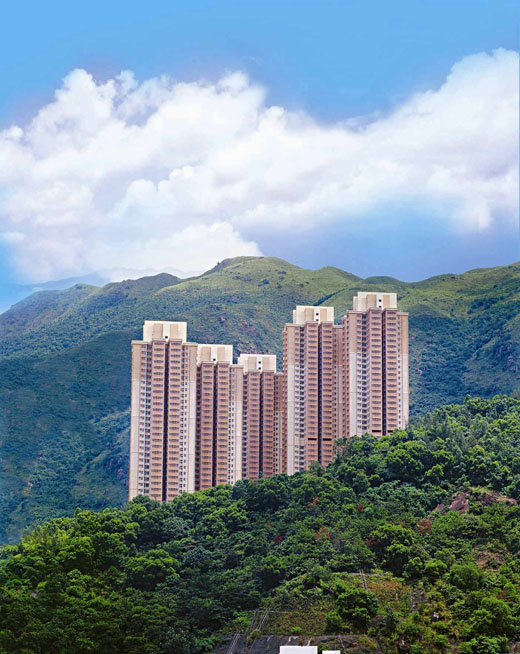 |
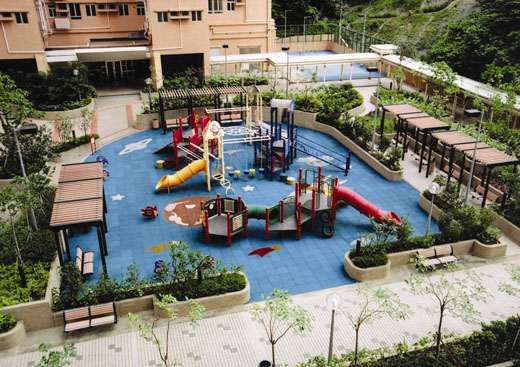 |
Reducing Vacancy Rates
As part of our 12th Express Flat Allocation Scheme, we implemented a new letting strategy in July 2007. Under the initiative, eligible applicants applying for PRH estates will have a second opportunity to choose a housing unit even though they failed in the first round. A total of 2 900 applicants were housed after implementing this initiative for nine months.
To further reduce the vacancy rates of our housing resources, we offer rent reduction incentives from 1 September 2007 to PRH tenants who take up flats with long vacancy periods. Tenants are entitled to a 50% rental reduction for eight months or 12 months if they have taken up flats with a valid vacant period of 12-24 months or over 24 months respectively. Through this incentive scheme, 2 400 long vacant flats have been taken up by the end of March 2008.
Besides public housing, we have also launched various initiatives to enhance better utilization of our commercial premises. These include:
| Locations | Initiatives | Status |
| Tin Heng Car Park | Conversion of the fifth floor into a creative media workshop | Completed |
| Renovation on the first, second and fifth floors to a Telebet cum Volunteers and Training Centre | In progress | |
| Nam Shan Car Park | Conversion of the car parks into arts-related facilities | Negotiating with relevant parties |
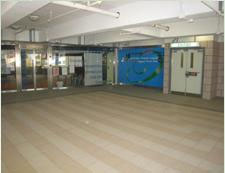 |
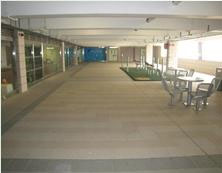 |
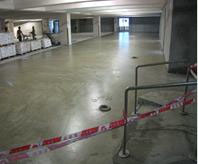 |
| Tin Heng Car Park - Conversion of the fifth floor into a creative media workshop | Tin Heng Car Park - Renovation on the first, second and fifth floors to a Telebet cum Volunteers and Training Centre |
|
Diversifying Letting Strategies for Commercial Properties
Throughout the years we have derived a number of diversified letting strategies to boost the letting rate of our commercial properties, with due consideration of market trends. These include Open Instant Tenders, walk-in applications, the designation of vacant shops and stalls for multiple trades, package lettings, rent-free incentive schemes for long-standing vacancies, reviews of the trade mix in existing shopping centres, and invitation of large chain stores to operate in our properties. To keep pace with market trends, we appointed a leasing advisor to develop detailed design, leasing, tenant-mix, marking and promotional plans in our new Yau Tong/Lei Yue Mun Retail and Car Parking Development project.
Adhering to our social commitments, we fully support the "Enhancing Self-Reliance through District Partnership Programmes" funded by the Home Affairs Department to provide suitable rental premises to non-profit organisations. Under the programme, we have let our properties to two non-government organisations at Pak Tin Estate and Hoi Lai Shopping Centre. One of our recent initiatives was to renovate vacant kindergarten premises for welfare lettings or government offices.
Managing Car Park Facilities
Effective 1 January 2008, the monthly parking charges in 33 HA car parks with higher occupancy rates have been increased by 5%, with a flat increase of HK$20 for motorcycles. The hourly rate for private cars also went up by HK$1 for all HA car parks. Despite the increase, the adjustment benefited the users by extending the day-pass rate to cover weekends and public holidays, and offering a 20% discount for the bulk purchase of 50 parking coupons or its multiples.
To enhance accessibility and security, we are planning to install Octopus payment systems and enhanced electronic security systems within our car parks.
![]()
Operation with Cost-Effectiveness
Improve Building Design and Construction
To optimise the development potential of individual building sites and the utilisation of the surrounding environment, the Housing Authority (HA) has moved into site-specific designs in recent years. Because of the greater challenges in buildability and cost considerations, we have incorporated a range of modular flat designs into these diverse building developments. These modular flats, planned to roll out in around late 2008, enhance consistency in our buildings and enable our housing programme to be realised in a planned and sustainable manner, with greater safety and less environmental impact. Costs are greatly reduced by the module repetitions and the ability to use more mechanised and prefabricated construction techniques.
First introduced in the 1980s, the use of precasting and prefabrication construction techniques benefits the building process by improving building quality, increasing site safety, reducing noise and air pollution, minimising construction waste as well as rationalising the costs. To confirm the advantage of using these techniques in our housing units, we conducted a trial run in the redevelopment of a flatted factory in Kwai Chung (see Case Study). The project was completed in early 2008 and a total of 60% of the concrete work adopted precasting and prefabrication.
 |
| Redevelopment of the Flatted Factory in Kwai Chung using Precasting and Prefabrication Construction Techniques |
Cost Effective Structural Design
We always look for opportunities to further enhance our structural optimisation process. Independent studies on the structural cost effectiveness of our estates show that the total construction costs of HA projects are more than 40% lower than similar projects in the private sector, while the structural cost of non-standard residential blocks are 17% lower than private sector projects. In 2007, we continued our efforts to develop our own software to enhance the efficiency of our structural optimisation work. As a result, total construction costs were trimmed by about 1%.
Independent Checking and Performance Monitoring
The Independent Checking Unit (ICU) carries out the necessary building controls based on the Building Department's practices. As our buildings do not fall under the control of the Buildings Ordinance, to ensure regulatory compliance the ICU is responsible for carrying out third party monitoring and control of all new developments, alterations, and addition works in all Public Rental Housing (PRH) buildings. The ICU prevents unauthorised building works and any problems that may arise, to maintain building quality, the efficiency of our building process, and minimising costs incurred due to the renovation or removal of unauthorised structures. The ICU is also responsible for providing advice to licensing authorities and regulating the use of all lift and escalator installations within our PRH estates.
Utilisation of Expertise
Managing diverse business activities, we tap into private expertise in appropriate industries to add value to our services. As such we have outsourced the management of our shopping centres, factories and car-parks to private property management agents to provide additional care, achieve greater cost-effectiveness and improve the management of our facilities. In 2007/08, we subcontracted the management of four shopping centres, including Nam Shan, Shek Kip Mei, Pak Tin and Wah Fu (II) and the Lung Cheung Office Block, to three property management agents.
 |
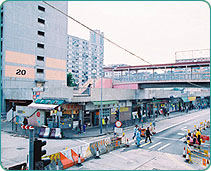 |
| Nam Shan Shopping Centre | Shek Kip Mei Shopping Centre |
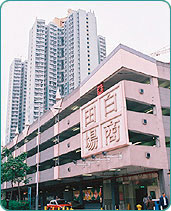 |
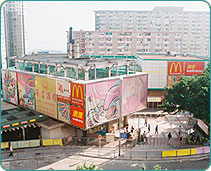 |
Pak Tin Shopping Centre |
Wah Fu (II) Shopping Centre |
Total Maintenance Scheme
In February 2006, we introduced our Total Maintenance Scheme (TMS) to provide comprehensive in-flat inspections and maintenance services to all our PRH estates in a continuous five-year cycle. The TMS safeguards our housing quality by preventing minor issues from becoming serious problems both inside the tenants' homes and in the common areas of our buildings. This active maintenance scheme maximises the economic value of our housing assets by extending the effective life span of our housing blocks and providing better living conditions.
Since implementing the TMS, we have completed inspections of about 93 000 homes, which cover about 85% of the units in 50 estates. As a result, nearly 150 000 repairs costing about HK$107 million had been completed.
 |
| Services under our Total Maintenance Scheme |
Tenants could make inspection appointments and check maintenance progress through our maintenance hotline; over 33 000 appointments were successfully made between December 2006 and March 2008. Tenants were also able to access maintenance information on the TMS web site.
Our efforts in implementing the TMS have been widely recognised by the community. In 2007, the TMS received positive feedback from our tenants and significant awards in different areas. They are highlighted below.
 |
| TMSS won various awards |
- Our innovative and powerful computerised TMS System (TMSS) won the Best Public Service Application (Innovative) Silver Award and the Best Public Service Application (Most Favoured) Bronze Award in Hong Kong's Information and Communication Technology Awards 2007 organised by the Hong Kong Institution of Engineers.
- The TMS received the second runner-up award in the Internal Service Category of the Civil Service Bureau's Outstanding Service Award Scheme.
- Results of the TMS survey in December 2007 showed that 87% of tenants were either very satisfied or satisfied with our TMS maintenance services. Among them, 73% deemed that the TMS is very effective or effective in improving the quality of in-flat maintenance.
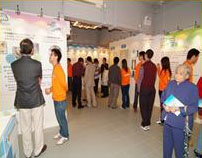 |
| Maintenance Education Path at Tai Wo Hau Estate |
In addition to direct communication with our In-flat Inspection Ambassadors and video broadcasting at the Housing Channel, we have also run the Maintenance Education Path at Tai Wo Hau Estate and Mobile Education Booths at PRH estates to promote public awareness of the importance of maintenance in PRH estates. So far, our Mobile Education Booths have visited 44 estates and have attracted over 13 000 visitors.
Comprehensive Structural Investigation Programme
Targeting older PRH estates, our Comprehensive Structural Investigation Programme (CSIP) provides a "health check" on the safety, building structure and quality of accommodation of our housing estates. The CSIP facilitates the formulation of long-term maintenance and re-development strategy of old PRH estates that can maximise operational efficiency and also optimise the economic value of our housing assets. In concert with the TMS, the CSIP contributes to achieve the sustainability of our public housing stock.
In 2007/08, we completed the investigations at Tung Tau Estate Block 22 and Fuk Loi Estate and made a decision to clear the former and maintain the latter for a further 15 years. Investigations at Wah Fu Estate and Ping Shek Estate are well under way and will be completed by the end of 2008. The CSIP has been extended as a long-term programme; a further 32 ageing estates will be investigated in the next 10 years.
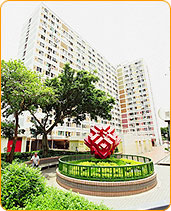 |
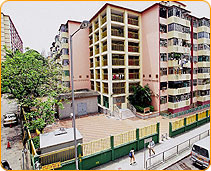 |
| Tung Tau Estate Block 22 | Fuk Loi Estate |
Research and Development
To better manage and improve our massive housing stock, we endeavour to explore various new R&D initiatives to enhance our operation efficiency and reduce environmental impact. These initiatives include the investigation of more durable materials, longer lasting repair methods and the use of more environmentally friendly materials, so as to reduce long term maintenance costs. We have also studied the use of stain-, odour- and germ-free tiling and coatings for public toilets and other hygienic areas, as well as the applicability and effectiveness of various testing techniques.
In 2007/08, we introduced initiatives such as stainless steel water pipes, new insulation materials on metal pipes to address condensation problems, a new technique for concrete repairs, and two testing techniques, namely a microwave moisture measuring system and an on-site stainless steel testing kit. The former provides a three-dimensional picture of moisture content inside building elements that can help minimise the need for repeated inspections and repairs; while the latter enables immediate on-site checking to ensure the correct grade of stainless steel.
Empowerment with IT
The efficiency of our services has been greatly enhanced by increasing IT applications in our daily operations. We implemented two major systems in the management and maintenance of our housing estates, which help to improve the processing of PRH applications and the management of domestic tenancies. For instance, tenants can submit their applications and check progress online. The systems also enhance the enquiry handling process by enabling our frontline staff and hotline operators to easily locate tenant information. We also introduced the face authentication system to facilitate the management and monitoring of cleaning staff and security guards at our housing estates.
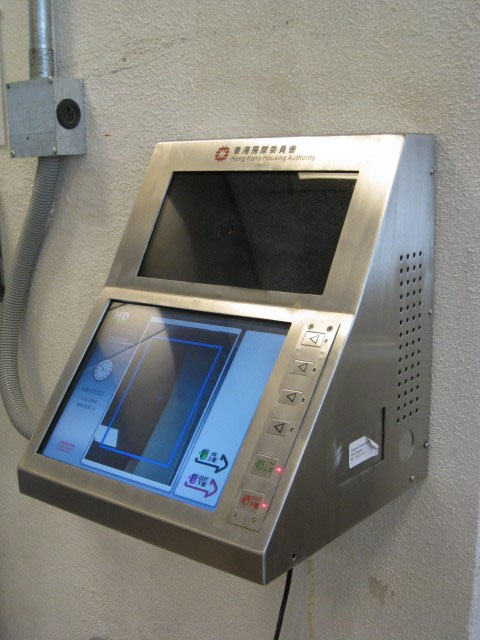 |
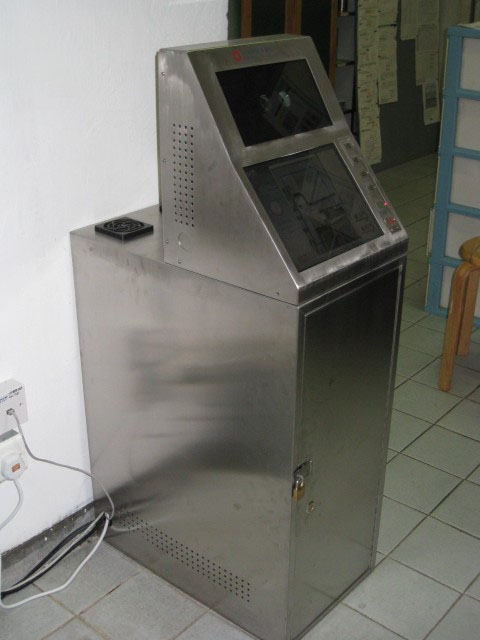 |
| Wall Mount Type Face Authentication System | Kiosk Type Face Authentication System |
Internally, IT also helps improving office operations. We are testing imaging technology to improve overall operation efficiency and reduce the use of paper. In addition, we are building a corporate data warehouse to facilitate the decision making process by monitoring our operations, trends identification, information analysis and forecasts.
![]()
